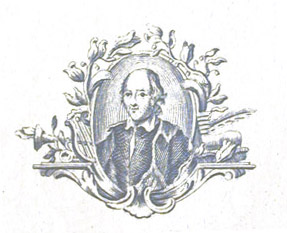

ABOUT THE PROJECT
PROJECT CREDITS
MAIN PAGE
SPECTATOR
COMPLETE
SPECTATOR XML
TATLER COMPLETE
|
|

The Spectator Project:
A Hypermedia Research Archive
of Eighteenth-Century Periodicals
The Spectator Project is an interactive hypermedia environment for
the study of The Tatler (1709-1711), The Spectator (1711-14), and
the eighteenth-century periodical in general. The most innovative
feature of the project developed out of the object of study itself.
The format, style, and even the content of The Tatler and the
Spectator were immediately and closely imitated in hundreds of
periodicals in Europe and the Americas. The Spectator Project will
allow users to compare imitated and imitating formats and passages
of text through the means of hyperlinks. A footnote will appear,
for example, in the text of Marivaux's Le Spectateur
français or Eliza Haywood's The Female Spectator, and
the user will click on it to bring up the passage in the Spectator
that it derives from. While there are editions of
eighteenth-century periodicals on-line and in CD-ROM format, none
have linked multiple periodicals together for the purpose of
studying their complex interrelation. While many scholarly web
projects simply make their material more widely available--in
itself, a laudable goal--this feature makes our project an
interpretive editorial apparatus, and one which is based on the
special capabilities of the digital environment.
The limits imposed
on the study of periodicals through reprint editions and even
through primary documents are extensive. Reprint editions,
including the definitive edition of The Spectator (ed., D.F. Bond,
5 volumes (Oxford: Oxford University Press, 1965)), are generally
hardcover, multi-volume series, and are often out-of-print, so they
are rarely owned by scholars. (Versions of The Tatler and The
Spectator currently in print are selected editions, and include
less than one-fifth of the entire series.) Consequently, simply
making The Spectator accessible in its entirety will provide a
useful resource.
The obstacles to scholarly study of the
eighteenth-century periodical in book form, however, extend far
beyond their availability. Book editions of periodicals are limited
in precisely those ways that inhibit the most innovative aspects of
the scholarly work that is currently being done on them. Since very
few are facsimile editions, they do not reproduce the
periodicals' format or typography, and they exclude elements
of the originals (such as advertisements) regarded as
extra-textual. Most importantly, the kind of editorial apparatus
that is possible in a book cannot demonstrate the level of
imitation and appropriation that takes place between the
periodicals of Addison and Steele and those periodicals that
follow. Scholars studying original documents or microfilms of
eighteenth-century periodicals (and particularly those working in
languages other than English) may not be aware, for example, that a
given passage imitates and alters a passage from the Spectator,
and, of course, will not have the guidance of an editorial
apparatus. This last point is particularly important, as the
reprinting of periodical essays in modern editions lags far behind
scholarly interest in the periodical. Even in scholarly editions,
footnotes are limited in their capacity to document the passages
imitating Addison and Steele beyond reproducing a few lines of the
Tatler or the Spectator.
While the Spectator Project will assuage
all of these difficulties, it will also allow the user to
manipulate the texts. Users can conduct complex structured searches
of this large corpus and to access critical materials that
elucidate both the periodicals and the contexts of their production
and reception. Researchers working on topics ranging from the
history of literary criticism to the consumption of snuff and
caffeine in the Augustan era can search hundreds of issues of The
Spectator in a matter of seconds, producing a ranked survey of
every mention of their topic of study. Soon, users will be able to
consult maps of Queen Anne's London (with special sections on
both the London book trade and the haunts of Addison and
Steele's persona, "Mr. Spectator," glossaries of
terms from eighteenth-century dictionaries, formats of both the
original periodicals and bound volumes through the nineteenth
century, and other ancillary materials.
SPECTATOR PROJECT ADVISORY BOARD
- Joseph Chaves (English, Wesleyan University)
- François Cornilliat (French, CLL Faculty Chair)
- Jared Gardner (English, Ohio State University)
- Mark G. Spencer (St. Michael's College, University of Toronto)
- John McCarthy (German, Vanderbilt University)
- Charles E. Clark (Emeritus, History, University of New
Hampshire)
- Jack Lynch (English Rutgers Newark)
- Michael McKeon (English Rutgers)
- Meredith McGill (English Rutgers)
- Pierre Morère (English, University of Grenoble)
- Kathleen Kemmerer (English, Penn State Hazelton)
- Nicholas Rennie (German Rutgers)
- English Showalter (Emeritus, French, Rutgers University,
Camden)
- James Swenson (French Rutgers)
- James Tierney (University of Missouri - St. Louis)
- Jack Undank (Emeritus, French)
- Michael Warner (English Rutgers)
- Myra Jehlen (English Rutgers)
- Lorraine Piroux (French Rutgers)
- Kevin Mulcahy (Bibliographer for English, Alexander
Library)
- Joe Consoli (Bibliographer for Italian, Art
Library)
- Brian Hancock (Systems Librarian, Montclair State University)
- Jeffery Triggs (SCC, Alexander Library)
2006-02-19
|



